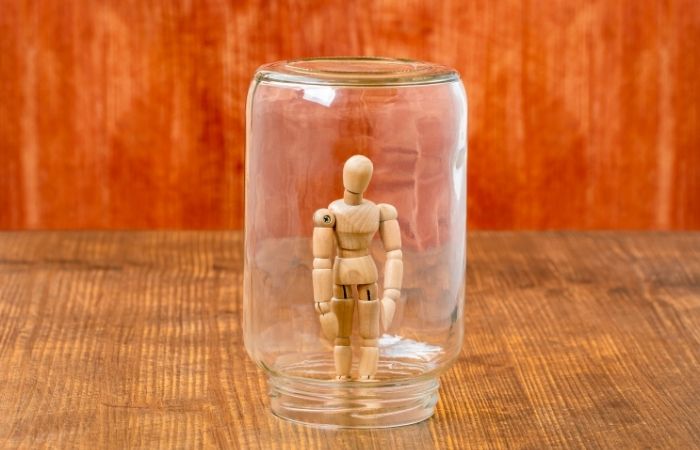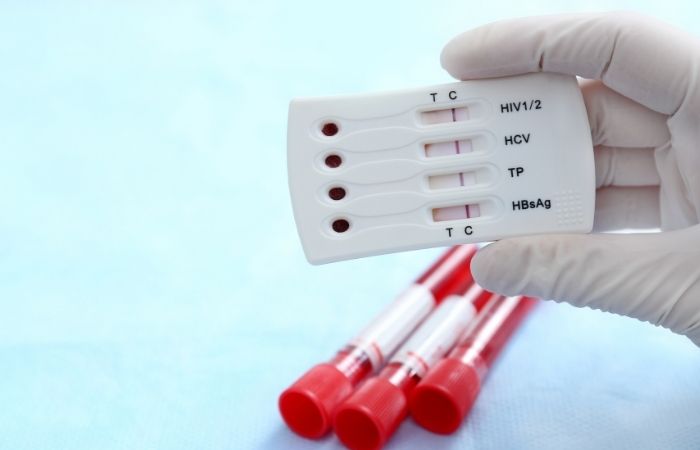Quick Answer: During COVID lockdowns, many people overlooked STD symptoms like unusual discharge, rashes, burning urination, pelvic pain, or mouth sores. Delayed testing meant infections often went untreated for months, fueling the current surge in STD rates.
Tanya, 29, swears she never would’ve ignored the burning sensation after sex if it hadn’t been 2020. “I thought it was stress, or maybe a UTI,” she says. But between back-to-back Zoom calls, news updates, and the constant fear of catching COVID, it didn’t feel like the right time to add “possible STD” to her list of worries. She pushed it out of her mind , until the pain got worse.
“Everything was about COVID. Even when I Googled symptoms, it felt like every result was about fevers and coughs, not what I was actually feeling.”
Tanya isn’t alone. Across the U.S., STD rates climbed during the pandemic, but many people didn’t notice, or didn’t want to. Clinics closed or limited services, social distancing kept people away from waiting rooms, and the background hum of panic made sexual health feel like something that could wait. The truth? Those weeks and months of delay let a lot of infections spread silently.

People are also reading: Syphilis Effects on the Brain: Why Untreated Syphilis Is So Dangerous
When COVID Took the Spotlight, Other Symptoms Slipped Away
In those first months of lockdown, every ache and sniffle had to pass the same mental test: “Could this be COVID?” That filter meant symptoms unrelated to breathing or fever often got ignored. Burning during urination was chalked up to dehydration. Itchy bumps were called razor burn. Pelvic pain? Probably stress or sitting too long at the kitchen table. The problem is that many STDs, including chlamydia, gonorrhea, and herpes, can simmer quietly with only subtle or easily dismissed signs.
Some infections showed up in ways people didn’t expect. One Arkansas man told researchers he had a sore in his mouth for weeks but assumed it was from biting his cheek. Later, he learned it was oral gonorrhea , something his dentist had never even suggested testing for. Without the usual rhythm of annual checkups, pap smears, or routine blood work, these clues slipped through.
According to the CDC’s 2021 STD Surveillance Report, reported cases of syphilis and gonorrhea surged during the pandemic, even though testing was down. That means the real number of infections was likely far higher , many simply weren’t being diagnosed until much later.
The Lockdown Mindset: “I’ll Deal With It Later”
When the world feels like it’s ending, “later” becomes an easy habit. Sexual health fell into that category for millions. Maybe you noticed a slight burning but told yourself it wasn’t urgent. Maybe your partner had a rash and shrugged it off as nothing. In a world where leaving the house felt dangerous, risking a trip to a clinic for something “probably fine” didn’t make sense.
One New York woman told me she delayed getting tested for almost eight months after noticing an unusual vaginal odor. “I thought I’d just treat it myself,” she says, explaining how she tried changing soaps, diets, even laundry detergents. By the time she finally made it to a clinic, she had untreated bacterial vaginosis alongside chlamydia. Both were easily treatable , but had caused months of discomfort and anxiety.
The common thread? People were trying to protect themselves from one threat by ignoring another. Unfortunately, STDs don’t wait for a pandemic to end before they cause harm.
The Numbers We Didn’t See Until Later
In the middle of lockdown, there wasn’t much headline space for anything other than case counts and mask mandates. But in clinics and labs that were still open, something else was quietly happening. Testing for STDs like chlamydia, gonorrhea, and syphilis dropped sharply , in some cases by more than 50% in spring 2020, according to Boston Medical Center data. Yet positivity rates , the percentage of tests that came back positive , actually went up.
That’s the part most people didn’t hear about. Fewer tests, more positives. It’s a sign that the infections we were catching were the ones people couldn’t ignore any longer , and that many more were quietly spreading in the background. By the time the CDC’s 2021 report came out, the numbers told a different story than the “safe at home” narrative. Syphilis cases had risen 74% since 2017, and gonorrhea had climbed to the highest rates in decades.
Check Your STD Status in Minutes
Test at Home with Remedium3-in-1 STD Test Kit

 For Men & Women
For Men & Women Results in Minutes
Results in Minutes No Lab Needed
No Lab Needed Private & Discreet
Private & DiscreetOrder Now $69.00 $147.00
For all 3 tests
Real Lives Behind the Stats
Andre, 34, remembers brushing off his symptoms for almost a year.
“It was just a little stinging when I peed. I figured it would go away.”
He’d lost his job during the pandemic and didn’t have health insurance, so getting tested felt like a luxury. It wasn’t until a new partner insisted on both of them getting screened that he found out he had gonorrhea , and had probably been carrying it since the early months of COVID.
For Leah, 41, it was more complicated. She was juggling remote school for three kids, taking care of her elderly father, and managing her own health conditions. When a red, itchy rash appeared in her groin, she decided to ignore it. “I was too embarrassed to deal with it over video with my doctor,” she says. Months later, a mobile testing van at her church diagnosed her with herpes.
“I wish I’d known they could treat me discreetly right away.”
These aren’t rare stories. They’re the quiet reality of what happens when fear, isolation, and limited services collide. People delay. Infections spread. And when life starts to feel “normal” again, the backlog of untreated cases comes rushing in.
Lockdown Behaviors That Made a Difference
It’s easy to assume STD rates went up simply because people were having more casual sex during the pandemic , but the reality is messier. Some people did have fewer partners, but those who were sexually active often saw the same partners repeatedly without testing in between. Condom use declined in some groups, especially among people who felt “safe” in small social bubbles. Others turned to dating apps during the isolation, and meetups often happened without the usual precautions.
The other piece? Healthcare avoidance. Even when clinics were open, many people stayed away because they feared catching COVID in waiting rooms. Telehealth was a lifeline for some, but not every STD can be diagnosed over video , and not every community had telehealth-ready providers. That gap left plenty of room for undetected infections to thrive.
It’s Not Too Late to Catch Up
If you skipped testing during lockdown , or longer , you’re not alone. And it’s not too late. Most STDs are treatable, many are curable, and all can be managed to protect both your health and your partners. The biggest shift comes from replacing “I’ll deal with it later” with “I’ll deal with it now.” That choice is where the damage stops.
Jay, 25, avoided testing for nearly two years because he didn’t have symptoms. When a new partner mentioned having chlamydia in the past, he decided to get checked “just in case.” His results came back positive. “I felt stupid at first, but then I realized how common it was,” he says. After one course of antibiotics, he was clear. “The relief was instant , I wished I’d done it sooner.”
For some, it’s about reframing the process. Testing doesn’t have to mean an awkward waiting room or prying questions. You can order a discreet at-home STD test kit, get results in days, and start treatment without anyone in your personal life knowing , unless you choose to share.

People are also reading: How Chlamydia Can Affect Babies When the Mother is Infected
Finding the Right Place to Start
Not sure where to begin? Start with a single step. Call a local sexual health clinic, your primary care provider, or a Planned Parenthood center. Ask if they offer walk-in testing, sliding scale fees, or same-day treatment. If you live in a smaller town, check for mobile health vans or regional testing events , they’re often posted on county health department sites and social media.
If transportation is an issue, some programs will mail free or low-cost test kits directly to your home. Others can help with gas cards or rideshare vouchers to get you to an appointment. The point isn’t doing it perfectly , it’s doing it at all.
Why Acting Now Protects More Than Just You
STD testing isn’t just about finding out if you have something. It’s about making sure you don’t unknowingly pass it to someone else. It’s about protecting your fertility, preventing chronic pain, and stopping infections before they can cause serious complications. It’s about clearing the mental fog that comes from wondering “what if.”
Kara, 33, says finally getting tested lifted a weight she didn’t even realize she’d been carrying.
“I thought I was fine, but I also thought about it every time I was intimate. The minute I saw my results, I could breathe again.”
That kind of peace of mind is something you can’t buy , but you can get it by taking action.
FAQs
1. What signs of STDs can be easily confused with other things?
Pain in the pelvis, burning during urination, unusual discharge, rashes, and sores in the mouth can all be mistaken for UTIs, allergies, or skin irritation.
2. Is it possible to have an STD and not show any symptoms?
Yes. Some STDs, like chlamydia and gonorrhea, can go for months or even years without showing any symptoms.
3. Did the number of STDs really go up during COVID?
Yes. The CDC says that during and after lockdowns, there were more cases of gonorrhea, syphilis, and chlamydia, even though fewer people were being tested.
4. Is it safe to get tested right now?
Yes, of course. Clinics have safety rules, and at-home STD test kits are a private option.
5. If we were "exclusive" during lockdown, can I get an STD from one partner?
Yes, if either partner had an infection that hadn't been treated before they became exclusive or during any contact with other people.
6. What should I do if I see signs now?
Set up the tests as soon as you can. If you catch them early, many infections are easy to treat.
7. Are home STD test kits reliable?
Yes. When used correctly, FDA-approved kits are very accurate and can find common infections.
8. Can I get treatment even if I don't have insurance?
Yes. A lot of clinics offer free or sliding scale treatment, and some drug programs give out drugs for free.
9. If I test positive, should I tell my ex-partners?
Yes. Letting partners know helps them get treatment and stops them from getting sick again.
10. What if I don't want to go to a clinic because I'm too embarrassed?
You can take a test at home or go to a clinic outside of your area for more privacy.
Before You Panic, Here’s What to Do Next
If you missed STD testing during the pandemic, you’re not alone. The important thing is to start now , not to dwell on the delay. Whether it’s a quiet symptom that’s been nagging you or just the need for peace of mind, you have options for discreet, fast, and affordable care.
Sources
1. CDC: 2021 STD Surveillance Report
2. Boston Medical Center: STI & HIV Screening During COVID-19
3. SMSNA: How Did STI Rates Change During COVID-19?
4. PMC: Impact of COVID-19 on Sexual Health Services
5. Axios: CDC Warns of Rising STD Rates










